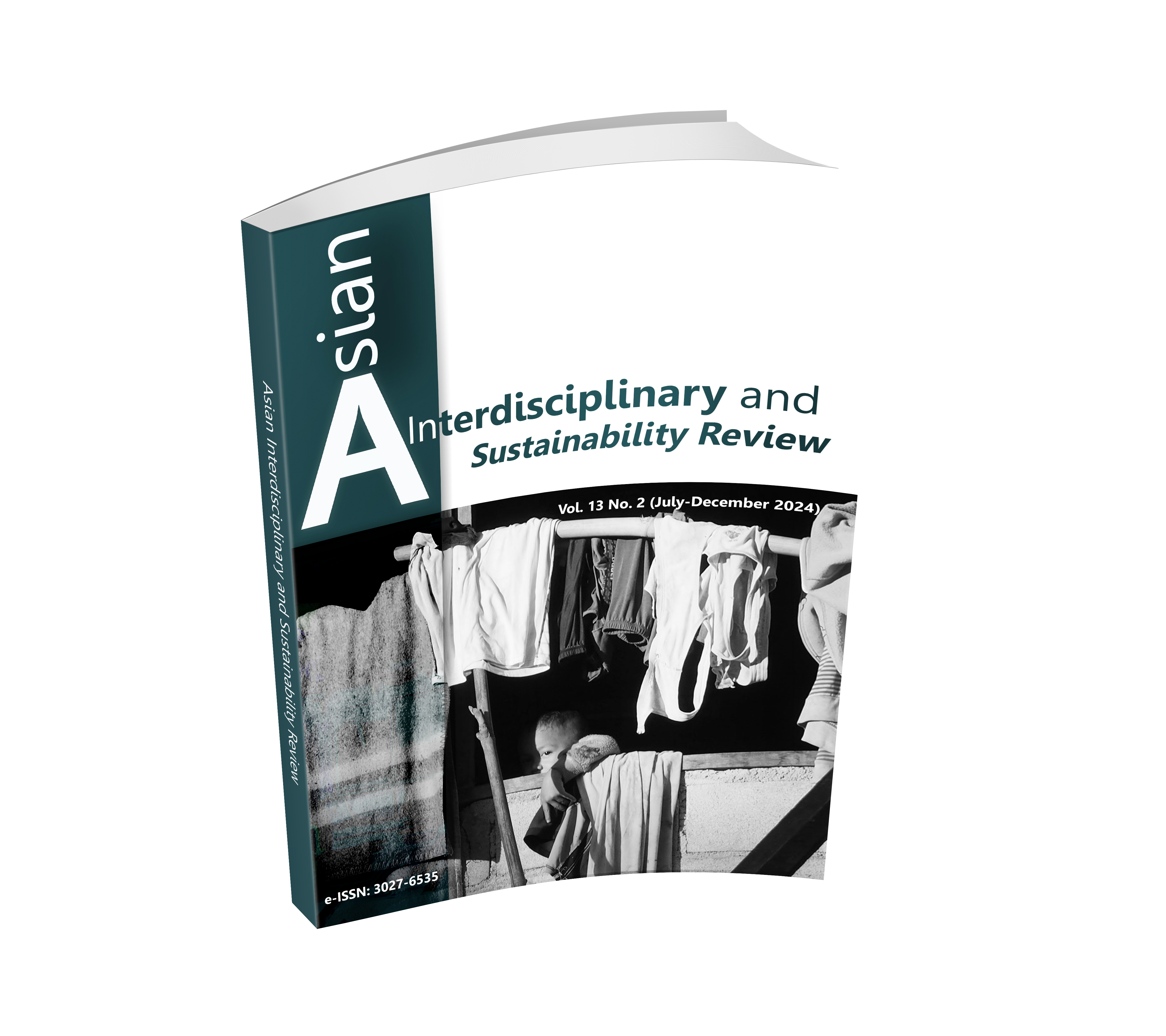THE INFLUENCE OF TECHNOLOGY ACCEPTANCE ON THE INTENTION TO USE ONLINE BANKING APPLICATIONS FOR FINANCIAL TRANSACTIONS AMONG GENERATION B USERS IN BANGKOK, THAILAND
DOI:
https://doi.org/10.14456/aisr.2024.20Keywords:
Technology Acceptance, Intention to Use Services, Online Banking ApplicationsAbstract
This study aimed to investigate the influence of technology acceptance on the intention to use online banking applications for financial transactions. This research was conducted using quantitative research. The sample was 400 Generation B individuals who have previously used online banking applications in Bangkok, Thailand. The research instrument employed was a questionnaire. Descriptive statistics were used for data analysis, while inferential statistics for hypothesis testing involved multiple regression analysis. The study findings indicated that the influence of technology acceptance, regarding relative advantages, compatibility, and complexity affected the intention to use online banking applications among Generation B users in Bangkok with a statistical significance level of .05.
Downloads
References
Awais, M., Wang, J., & Manzoor, F. (2022). The Role of Compatibility in Technology Adoption: A Comparative Study of Mobile and Traditional Banking Services. Journal of Financial Services Research, 62(1), 21-36.
Chiwosophit, C. (2019). Development and Adoption of Mobile Banking Applications in Thailand: An Empirical Study. International Journal of Bank Marketing, 37(7), 1679-1697.
Cochran, W. (1977). Sampling Techniques. 3rd ed. New York: John Wiley & Sons.
Corral, A., Garcı́a, R., & Martínez, P. (2021). Observability in Technology Adoption: An Examination of Online Banking. Information & Management, 58(6), 103455.
Dialsingh, I., Miles, J., & Shevlin, M. (2001). Applying Regression and Correlation. Journal of the Royal Statistical Society: Series D (The Statistician), 50(4), 367-379.
Divya, P., & Hebbar, P. (2021). The Compatibility of Mobile Banking Applications with User Lifestyles. Journal of Retailing and Consumer Services, 60, 102443.
Dunham, R., Pierce, J., & Crampton, S. (2001). Technological advancements in financial transactions: Mobile banking and its impact. Journal of Financial Services Research, 20(2), 165-177.
Gao, G., Li, C., & Lu, M. (2019). Complexity in Mobile Banking Applications: User Experience and Technology Adoption. Computers in Human Behavior, 93, 273-281.
Jebarajakirthy, C., & Shankar, A. (2021). Impact of Online Convenience on Mobile Banking Adoption Intention: A Moderated Mediation Approach. Journal of Retailing and Consumer Services, 59, 102323.
Karlnate, T., & Vannavanit, Y. (2021). A Technology Acceptance Model and Trust as Influencers of “SCB Easy”. Journal of Suvarnabhumi Institute of Technology (Humanities and Social Sciences), 7(1), 374-389.
Khrais, N., & Alghamdi, H. (2021). Relative Advantage of Mobile Banking: Comparative Analysis and User Acceptance. Journal of Electronic Commerce Research, 22(3), 159-175.
Kongphalee, J. (2020). The Drive towards a Cashless Society in Thailand: Government Strategies and Their Effectiveness. Thai Journal of Economics and Finance, 34(1), 57-73.
Li, Y., Liu, Y., & Zhang, X. (2021). Perceived Benefits of Mobile Banking Applications and Their Influence on Adoption. International Journal of Information Management, 56, 102222.
Magotra, R., Rathi, D., & Sharma, S. (2018). Adoption of Digital Financial Services by the Elderly in Thailand. Journal of Financial Services Marketing, 23(4), 286-297.
Montazemi, A., & Qahri-Saremi, H. (2015). Factors Affecting Adoption of Online Banking: A Meta-Analytic Structural Equation Modeling Study. Information & Management, 52(2), 210-226.
Ntsiful, S., Boakye, K., & Appiah, E. (2020). The Observability of Benefits in Technology Adoption: Insights from Mobile Banking. Computers & Security, 92, 101741.
Parasuraman, A., Zeithaml, V., & Malhotra, A. (2005). E-S-QUAL: A Multiple-Item Scale for Assessing Electronic Service Quality. Journal of Service Research, 7(3), 213-233.
Pedhazur, E. (1997). Multiple Regression in Behavioral Research: An Explanation and Prediction. New York: Holt, Rinehart & Winston.
Rodkhem, S., & Chaiprasit, T. (2019). Challenges and Strategies for Increasing Trust in Mobile Banking among Elderly Users. Asian Journal of Business and Accounting, 12(1), 45-67.
Tansakul, R. (2022). Electronic Payment Infrastructure Development in Thailand: Government Initiatives and Industry Response. Financial Technology Review, 29(2), 99-115.
Thep-on, T., Sirichote, R., & Noknoi, N. (2023). Technology Acceptance Model and Mobile Banking: An Empirical Study of Generation B in Bangkok. Journal of Technology and Management, 30(1), 95-114.
Ugur, N., & Turan, A. (2019). Mobile Applications Acceptance: A Theoretical Model Proposal and Empirical Test. International Journal of E-Adoption, 11(2), 13-30.
Vanishbanchaya, R. (2003). The Reliability and Validity of Research Instruments: An Introduction. Journal of Research Methodology, 12(1), 22-35.
Venkatesh, V., Morris, M., Davis, G., & Davis, F. (2003). User Acceptance of Information Technology: Toward a Unified View. MIS Quarterly, 27(3), 425-478.
Wang, H., Liu, J., & Zhang, Y. (2018). Accessibility and Perceived Value in Mobile Banking Services. Journal of Consumer Behaviour, 17(5), 431-441.
Yin, J., & Lin, Z. (2022). Enhancing User Confidence through Observability in Mobile Banking Applications. Journal of Digital Banking, 7(2), 132-147.

Downloads
Published
How to Cite
Issue
Section
License
Copyright (c) 2024 Authors

This work is licensed under a Creative Commons Attribution-NonCommercial-NoDerivatives 4.0 International License.











.png)


